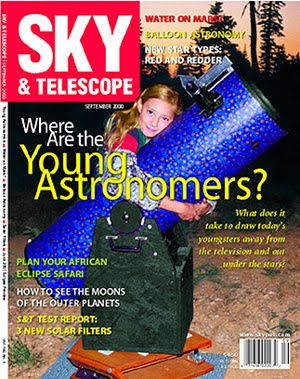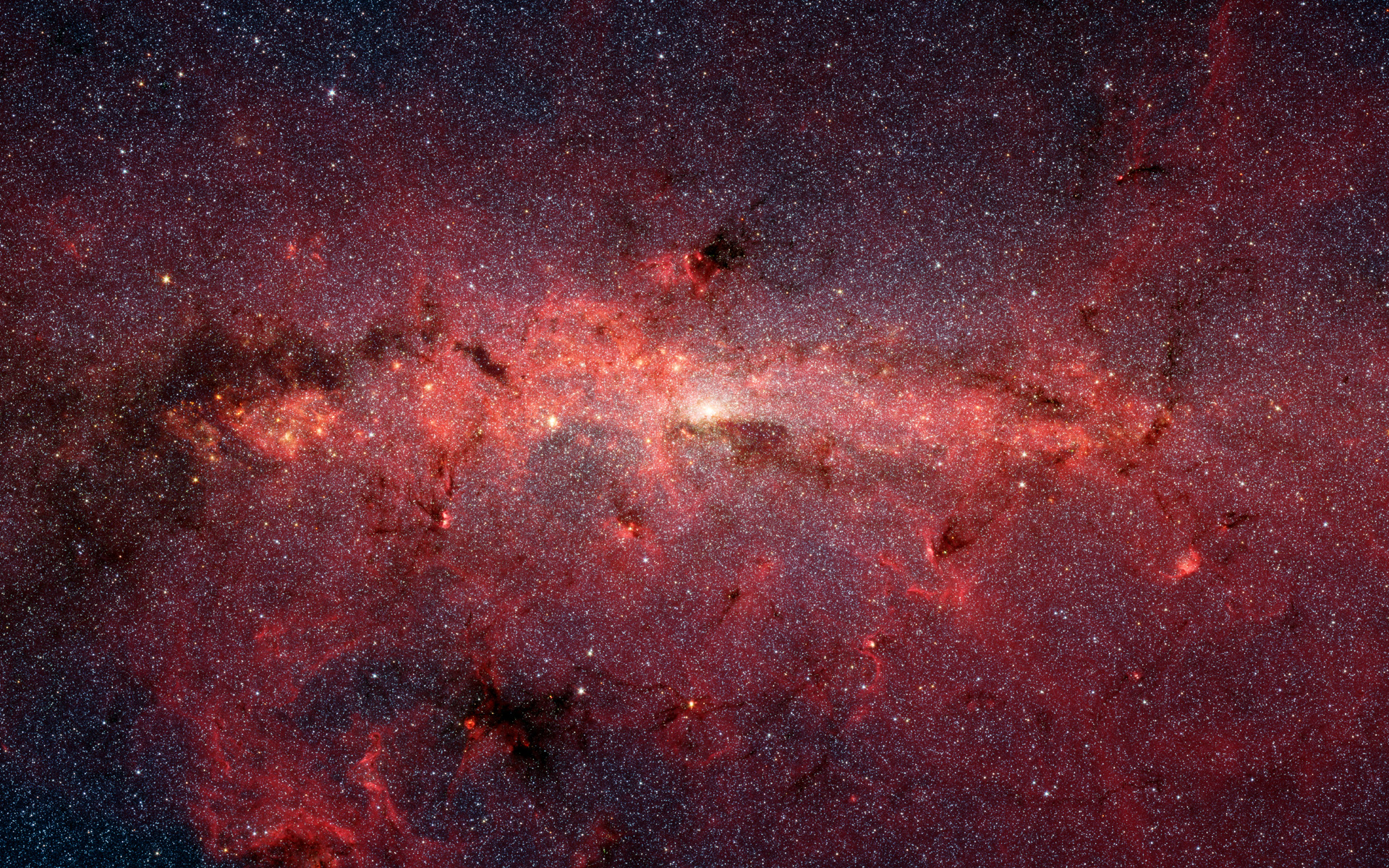Last night I was able to observe twice with two different equipment setups.
Early in the evening, just after supper time.... I took my 10x50 binos and Virgo binocular mount around the corner to Fisher Middle School in Los Gatos, and set up on their outdoor basketball courts. My wife Pat, daughter Mimi and her friend Ashley accompanied me. I set up in a dark area near the gymnasium.... which actually looks like a primo spot for a small (8") scope.
I described to Mimi where the comet was, talking her from Alpha to Beta Arietis and then halfway to Eta Piscium. The comet was there, easily visible, very bright coma that looked fuzzy but really almost stellar in its brightness and compactness. The tail was quite long, reaching eastward toward a single bright star near the top of the field. One could almost imagine a two-headed comet! Everyone enjoyed looking at this, but to Pat this was a rather disappointing view since her idea of comets is Hayakutake and Hale-Bopp! Mimi and I have, I think, a different appreciation for the nice view, since we have spent many nights together hunting much fainter objects.
I then turned the binos on other object. M31 was first. I did not describe it, but told Pat to look and tell me what she saw. She described an elongated glow pointed "up and down" (E/W) in the field. She felt it was not something she would have noticed without my telling her there was something there. True, it was low in the sky, but I knew transparency was not all that great. M31 should be a great binocular object.
Next were M47 and maybe M46, M45 (Pat loved this!), M42 which showed as a nice glow around some bright stars all involved in a much larger rich star field. Up to the belt stars to enjoy the view of all three in one field with the gorgeous sweeping chain snaking through the western pair. What a view! Both Pat and I saw M81 in the binos. Soon, we packed things up and headed to drop off some videos at Blockbuster.
I had uncovered and checked collimation (perfect!) on the 14.5" f/5.6 Dob in my backyard. Because the Herschel objects I am interestd in are mostly spring targets, I waited until after 11 p.m. to go outside. The breezes that had been blowing in Los Gatos during the afternoon had subsided. It was not all that cold out and seemed a perfect opportunity to get 2 to 3 hours observing in.
I began in Crater. This was just over the "tree-line" (my neighbor's 25 foot tall untended shrubs) to my south, but I could see Corvus and a few of Crater's stars. So off I went to find NGC 3892. Well, I decided to follow my rule, if I don't get it in 10 minutes, cut my losses. I was able to identify mag 4.7 Theta Crateris, but could not find the galaxy from there.
Well, that one was a Herschel 400-II object, so the next one would surely be easier as it was an Heschel 400-I. NGC 3938 is in an easy to locate position in Ursa Major, high overhead, nearly in Dobson's hole. I swung the scope up and soon had located a good landmark... 67 Ursae Majoris. That star is a wide double and beside being easily identifiable it is plain gorgeous.... a close grouping of bright stars ranging from mag 5 to mag 9. Using these stars I could determine what direction to go. Soon I saw a galaxy.
What surprised me was how dim the galaxy was. And its shape. I looked at first like a fuzzy star, but soon I saw a bulge and long extensions. This certainly did not fit the description of NGC 3938! I had found the dimmer NGC 4013, on the way to the brighter galaxy. I pumped up the magnification and wrote the following:
Stellar core with 12 Nagler. Around the core was a round glow, like a small dim globular cluster. Soon the galaxy revealed extensions ... quite long, running WSW to ENE. I thought I might be detecting a dark lane along the major axis and just N of the bright core.
I kept coming back to this object while attempting for find NGC 3938, but I never did find it. I began to think the seeing was deteriorating, as NGC 4013 was becoming increasingly difficult to detect. Soon I began noticing bloated bright stars. I could not get focus.
What I had been concerned about earlier in the day, the jet stream plowing down directly over us from the north, was making it difficult to pick out dim object. The seeing had gone bad.
Looking at the sky again I noted how high Arcturus was, and decided to try the seeing on M3. Very soft. Many stars, but not pinpoints.... defined, but rather hazy looking.
I knew the night was over.
But, before tucking the scope away for the night I pointed it between Denebola and Vindemiatrix, deep into the heart of the Virgo Cluster. Even fuzzed out, this was a great sight. It seemed everywhere I moved there were galaxies... barely a field went by without something non-stellar. At one point I wondered about two bright galaxies... elipticals.... could these be M84 and M86? Was I at Markarian's Chain? The answer was yes... I could identify NGC4308, that makes the galactic triangle I associate with the start of the chain. I could not see dimmer NGC 4402, and when I saw that NGCs 4438 and 4435 (The Eyes) were pretty dimmed out... I knew the night was done.
Although I had not gotten to see what I had hoped to, it was a nice hour out back. I felt refreshed and had, in fact, had a number of nice views during the evening. Looking this morning at an image of NGC 4013, I felt good that I had gleaned so much detail on a rather mediocre night.












No comments:
Post a Comment